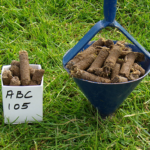Soil sampling is a critical practice in both agriculture and environmental management, providing valuable insights into the health and composition of soil. By collecting and analyzing soil samples, farmers, land managers, and environmental scientists can make informed decisions that enhance productivity, conserve resources, and safeguard the environment. In this article, we will explore what soil Sampling Los Angeles is, why it is important, and how it is done.
What is Soil Sampling?
Soil sampling involves collecting a small, representative portion of soil from a specific area for analysis. The goal is to obtain a sample that accurately reflects the soil’s properties and composition across a given space. This information is then used to assess soil fertility, pH, nutrient levels, contaminants, and other factors that influence plant growth and environmental quality.
Why is Soil Sampling Important?
- Optimizing Fertilizer Use
One of the primary reasons for soil sampling in agriculture is to determine the nutrient content of the soil. Soil testing helps farmers know what nutrients are lacking or in excess, allowing them to apply the right type and amount of fertilizer. This reduces the risk of over-fertilization, which can harm the environment, and ensures that crops receive the nutrients they need to grow efficiently. - Improving Crop Yields
Soil sampling enables farmers to create customized fertilization and soil management plans, ultimately boosting crop productivity. By addressing deficiencies and imbalances, crops can grow healthier, leading to improved yields and better quality produce. - Environmental Protection
In addition to agriculture, soil sampling is essential for environmental management. Soil testing can identify contaminants such as heavy metals, pesticides, or other pollutants that might pose a threat to plant, animal, or human health. Early detection of such contaminants allows for timely remediation and better land stewardship practices. - Soil pH Regulation
The pH of soil affects how well plants can absorb nutrients. A soil sample can provide the pH level of the soil, helping determine whether it is too acidic or alkaline. Correcting pH imbalances can improve nutrient uptake and promote healthier plants. - Preventing Erosion and Soil Degradation
Regular soil sampling helps track changes in soil structure and quality over time. This information can be used to prevent soil erosion and degradation by implementing appropriate soil conservation practices, such as crop rotation, organic amendments, and water management.
How is Soil Sampling Done?
- Choosing the Right Time
Soil sampling is typically done during specific times of the year to ensure accurate results. For agriculture, samples are often taken before planting in spring or after harvest. It’s best to sample when the soil is neither too wet nor too dry, as these conditions can affect the quality of the sample. - Selecting Sampling Locations
It is essential to take samples from representative areas of the field or land. In agriculture, the field is often divided into smaller sections based on soil type, past crop history, and management practices. For environmental purposes, samples are taken from areas suspected of contamination or in need of remediation. - Taking the Samples
A soil auger, shovel, or probe is used to collect the samples, which should be taken from several spots within each designated area. Samples are usually collected from a depth of 6 to 8 inches for surface soil, though deeper sampling may be required for certain tests. It’s important to avoid sampling near field borders or areas with visible signs of irregularity. - Mixing and Labeling
Once the samples are collected, they are mixed together to form a composite sample that represents the entire area. Each sample should be carefully labeled with details such as the location, depth, and date of collection to ensure accurate analysis. - Sending to a Lab
The collected soil samples are sent to a laboratory for analysis. The lab will test the soil for a variety of factors, such as nutrient levels (nitrogen, phosphorus, potassium), organic matter content, pH, and the presence of contaminants. The results will provide recommendations for soil management.
Interpreting Soil Test Results
Soil test results are typically provided with recommendations on how to improve soil health. These recommendations can include fertilizer application rates, lime requirements (to adjust pH), and other soil amendments. Farmers and land managers must understand how to interpret these results to make the most informed decisions for their specific needs.
Conclusion
Soil sampling is an indispensable tool for anyone managing land or crops. It helps ensure that soil conditions are ideal for plant growth, protects the environment, and enables more sustainable agricultural practices. Regular soil testing and thoughtful analysis are key to improving crop yields, preventing environmental damage, and enhancing the long-term health of the land. Whether for a small garden, a large farm, or a rehabilitation project, soil sampling should be part of any responsible land management plan.

